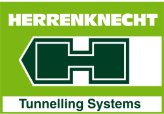What goes into the process of troubleshooting a faulty motor, when are seeing signs that it is a mechanical fault?

Part 8
Troubleshooting Mechanical Faults 2
Watch the above animation in full, & Access other episodes now!
Signup for FREE to receive access >>>
Animated Video Tutorial Training Series - Part 8
Troubleshooting Mechanical Faults (Part 2):
We use a variety of electric motors in our daily life, many of which are AC or alternating current electromotors. Another type of motors is DC or direct current. This article is about electric motors that are often used in industry and commerce, although sometimes they are also used in residential buildings or household appliances. Although we deal with all kinds of electric motors every day, many people do not know exactly how an electric motor works, or how to troubleshoot it. The design of AC electric motors has been done in a mechanical and electrical way in an engineering and precise manner, for this reason they are very reliable and rarely need service and repairs.
Basic understanding of how electric motors work, as well as simple things you can do, will increase the life of the electric motor significantly. Several different parts work together to make an electric motor move. These components include:
Stator
As the name suggests, the stator is a permanent magnet piece attached around the edge of the motor shell. The stator is not a solid piece, but consists of thin metal sheets. Using several pieces of sheet metal instead of a single core improves energy efficiency.
Rotor
The rotor is mounted on an axis that rotates at the speed determined in the design of the electromotor and motion control equipment. The rotor is a current conductor that moves with the magnetic field produced by the stator. This action causes the motor axis to rotate.
Air Gap
An air gap is required between the rotor and the stator. This gap is usually small because if it is too big, it causes problems in the performance and efficiency of the engine.
Windings
The coil consists of massive wires wrapped and designed in the form of magnetic poles, which facilitates the flow of electricity.
If after purchasing and installing the electric motor or after the passage of time, you see that the device does not work, you can find and repair the fault by performing a few simple steps. These steps are the main steps, but to perform more complicated steps, the engine fault needs to be determined by the service worker.
Cut off the electric motor
This action is not to diagnose the failure of the electric motor, but to protect yourself and to observe safety, before doing any kind of activity on the electric motor, you must make sure that the electricity is cut off.
Initial inspection
Filling out the basic inspection forms is one of the most important parts of the repairs, which can give important clues about the cause of the electric motor failure before opening the electric motor. These forms contain all the information of the electric motor, which especially includes the following information:
- Nominal information of the electric motor
- Results of visual inspection
- Information obtained from the customer
Visual inspection of the electric motor
There can be some things on the external surface of the electric motor that cause disruption in its internal mechanism.
Some of these are:
- Dirt or shavings that cause damage to the motor winding.
- Breaking the electric motor mounting base.
- The presence of dark spots in the center of the engine, which indicates excessive engine heat and may damage the engine.
- Humidity: water and electricity should not be placed together. The presence of moisture will damage engines that are not specifically designed for these conditions.
- Smell: by smelling a special and abnormal smell, you can quickly recognize engine failure.
Nominal information of the electric motor
- Record all information on the nameplate. Some codes, numbers or letters that seem meaningless may be very important to contact the manufacturer and ask for help.
- Remember that there may be more than one nameplate. Some OEMs have their own nameplates (which are sometimes replaced by the manufacturer), and some repairers add another nameplate indicating that the motor has already been repaired.
- Check if the electric motor has the EPA standard (American) or the EFF1 standard (European).
- Check if the electric motor is used in hazardous environments (EExd or EExe for IEC standard electric motors, UL or CSA for NEMA standard) or not.
Before opening the electric motor or generator, check and record the following items:
- Checking the general conditions such as whether it is old or new, clean or dirty.
- Obstruction or lack thereof in the passage of cooling air that may cause an excessive increase in temperature.
- The color of the shaft (brown or blue), which indicates an increase in the temperature of the rotor or bearing.
- Missing, damaged, replaced or repaired parts, seals, stator cooling ribs, fan, fan cover, terminal box, etc.
Finding the motor name plate
Because the motor nameplate is usually mounted on its shell, it is easy to find. The motor nameplate displays detailed specifications including power, voltage, current, RPM, torque, operating temperature, and other data. Finding the electric motor license plate is the end of all the speculations that production line colleagues have about the electric motor.
Checking the electric motor bearing
Bearings are available on both sides of an engine. If they are not connected correctly or are rusted or are out of their normal state for any other reason, the electric motor will not work properly. By examining and paying attention to any sign of rubbing, scraping, or hard and rough movement of the rotor, you can find out the fault of the bearing. The rotor should turn smoothly and quietly.
Check the cooling fan
The fan blades behind the motor are inside a metal shield. Check that nothing is blocking the metal guard of the fan.
If you have done all these steps but the problem still persists, show the electric motor to a professional repairman. If there was a way to repair it, considering the repair costs and if it is economical, you can repair it instead of buying a new electric motor.
Get in touch with us

Let’s Connect. We’ll call you at your convenience.
































